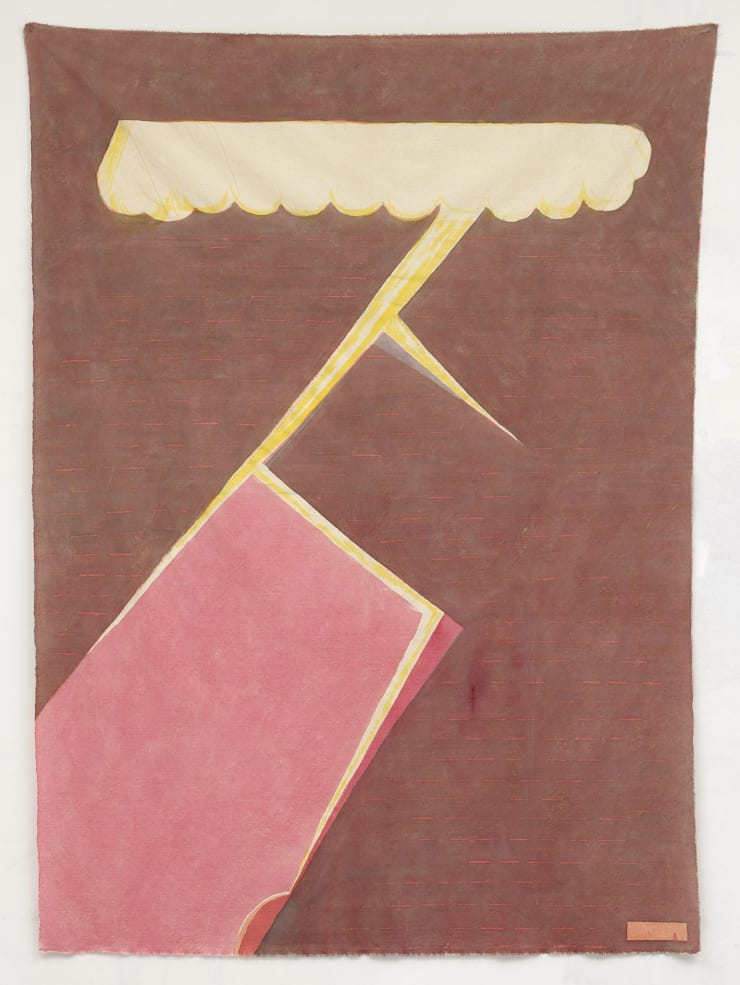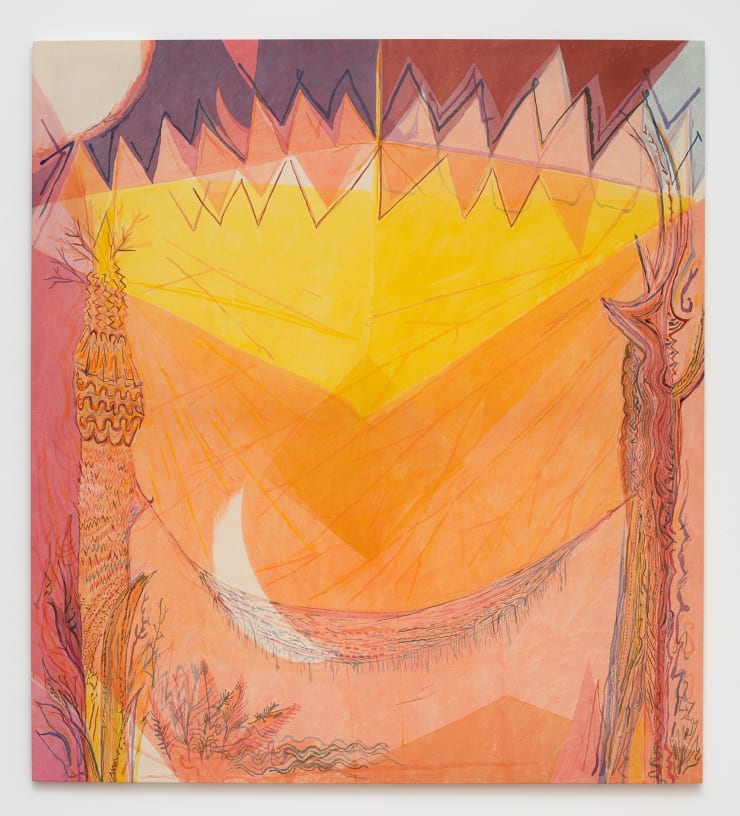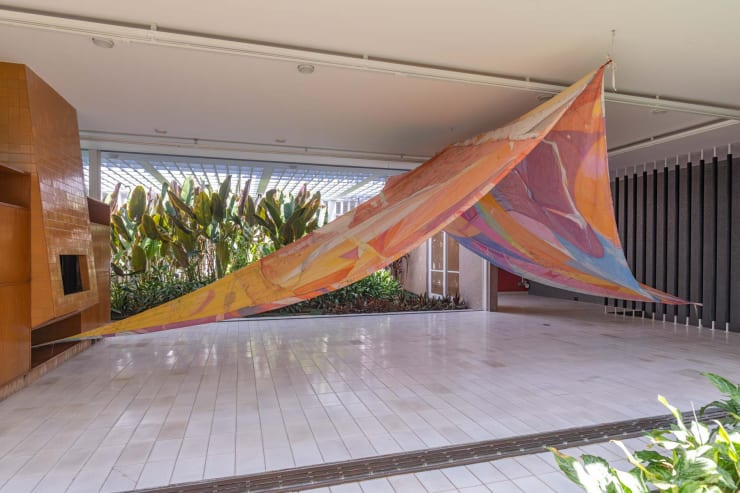André Sousa | Pince-nez
Past exhibition
Overview
Pince-nez
Dead tongue,
Flesh or petal.
The people's fire
at home — the worker
in town.
A dragonfly
over the nose — falls
the culture into the void.
The research by André Sousa explores the artifices of painting in an expanded field of artistic practice. Pince-nez, his first solo show in Brazil, reflects the essence of the Portuguese artist’s research in recent years, mainly through the site-specific installation by the same name, the centerpiece in the show. The work was conceived for the living room of the former residence, dialoguing directly with the modernist architecture by Rino Levi. The title Pince-nez was inspired by this striking object used by the character by the name of Quaresma in the novel Triste Fim de Policarpo Quaresma, by Lima Barreto. In the installation, this useful and antiquated object, the pince-nez, alludes to the character in the novel, who lives the dilemma of a declining culture. André Souza puts this transition of paradigms into relationship with nomadic or migratory movements, reminding us of the importance of the community ovens in villages (also in the interior of Portugal) that were emptied as their inhabitants moved to the big cities. Pince-nez (2022–23), located near the fireplace in the Modernist Room, bears the subjectivity of a community space of gathering, evoking dead languages, butterflies and petals of rare flowers.
When entering the Modernist Room, the visitor soon finds him- or herself enveloped within the space of a large fabric tent, attached low at each side and raised in the center. At first, the light, 100% cotton material contrasts with the robust, formalist architecture of the design by Rino Levi. The tent’s functional structure (as shelter and protection) takes the place of the house’s modernist structure, transforming the garden into a forest and turning the fireplace into an open-air campfire, alluding to the community oven.
For its transparency and movement, the long fabric that hovers overhead soon beckons for the visitors to interact with the gardens by Burle Marx. Nearly ten meters long, the piece – entirely handsewn and painted by André Sousa in his studio in Portugal – presents abstract and figurative elements that live together in harmony and interlink the concepts dealt with by his research, such as geometric symbols, various objects (chess boards), landscapes and natural elements (forest, waterfall and fire).
Pince-nez also features a group of five new small-scale paintings, which, in the same style as the installation, receive watery layers of acrylic paint. The imagery presented by the paintings in the large installation of the tent is complemented by the natural landscapes of the Rede [Hammock] series (2022), consisting of myths/landscapes, with hammocks extended between trees.
When entering the Modernist Room, the visitor soon finds him- or herself enveloped within the space of a large fabric tent, attached low at each side and raised in the center. At first, the light, 100% cotton material contrasts with the robust, formalist architecture of the design by Rino Levi. The tent’s functional structure (as shelter and protection) takes the place of the house’s modernist structure, transforming the garden into a forest and turning the fireplace into an open-air campfire, alluding to the community oven.
For its transparency and movement, the long fabric that hovers overhead soon beckons for the visitors to interact with the gardens by Burle Marx. Nearly ten meters long, the piece – entirely handsewn and painted by André Sousa in his studio in Portugal – presents abstract and figurative elements that live together in harmony and interlink the concepts dealt with by his research, such as geometric symbols, various objects (chess boards), landscapes and natural elements (forest, waterfall and fire).
Pince-nez also features a group of five new small-scale paintings, which, in the same style as the installation, receive watery layers of acrylic paint. The imagery presented by the paintings in the large installation of the tent is complemented by the natural landscapes of the Rede [Hammock] series (2022), consisting of myths/landscapes, with hammocks extended between trees.
Installation Views
Works
Video








